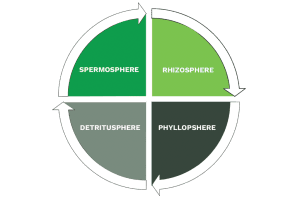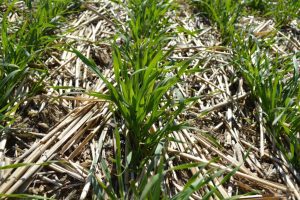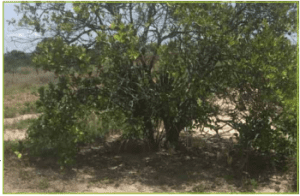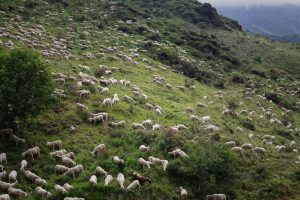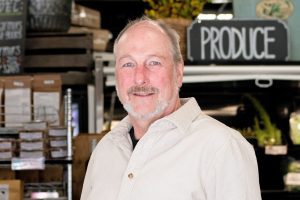Source: This post was originally published on AgFunder News
Rare Earth Global—a UK-based startup on a mission to simplify access to industrial hemp products for feed, construction, and energy—has raised a £1 million ($1.3 million) pre-seed round to expand its platform.
The round was led by a UK-based family office and includes contributions from an impact fund, angel investors, and some non-dilutive funding.
Founded by Jamie Lewis (CEO), Suneet Shivaprasad (COO/CTO) and Stephen Wong (CFO) in 2019, Rare Earth Global emerged from a consultancy project to explore how to bring in extra revenue from developing industrial hemp (Cannabis sativa plants with less than 0.3% of the psychoactive compound THC) in the Caribbean, Shivaprasad explained to AgFunderNews.
“One of the things that came out of that project was that South American growers we were in touch with were telling us all about the deforestation linked to soy being grown there for animal feed and saying look, with the hemp we’re growing, we should be doing that [growing hemp for animal feed] instead.”

Using the whole crop
Hemp’s rapid growth, low-chemical inputs, ability to sequester carbon, soil health benefits, and versatility make it a more climate-resilient crop than soy, he says. And using it in anything from animal feed to lightweight construction materials could help firms reduce scope 3 emissions.
But for Rare Earth to add value, he adds, “We have to do two things. One, find customers that really want to buy hemp products. And two, make sure the supply is there. On the customer side, it’s about developing sustainable hemp products and providing information on traceability, lifecycle analysis and quality for customers who may be using hemp for the first time.
“And on the hemp farmer side, they need a profitable crop. Right now, there is a certain amount of hemp being grown, but it’s not anywhere near commodity scale. And part of that is ensuring there are customers willing to buy and then getting the unit economics to work.”
As for building markets in animal feed, he says, “We went through feasibility studies and got initial funding from the UK government to test whether hemp [seeds, which are high in protein] could replace soy in salmon feed.
“And then we got some match funding from Mowi, the world’s largest producer of farm-raised Atlantic salmon and we ran studies for two years, which showed we have as good a product as soy, if not better, as far as performance is concerned. Then we did a full lifecycle study that shows a significant carbon footprint reduction [vs soy] from using hemp.”
The most obvious end market for hemp stalks, meanwhile, is “hempcrete,” a mixture of hemp stalks and lime used as a lightweight insulating material, says Shivaprasad, who is part of a working group comprising some of the largest construction companies globally who are interested in the product.
“Our basic focus is making full use of the whole plant: seed for feed and stalks for construction. And based on lifecycle analyses, we might also be able to provide carbon credits as well [as hempcrete acts as a carbon sink].”
“The aquaculture sector is our beachhead for the seed. Any waste left over from processing the stalk for construction, can be used for bioenergy pellets, which is a product that is ready today. We have annual demand for 10,000s of tons of those pellets from several end customers. This ensures a zero waste approach and maximum near term impact.” Suneet Shivaprasad, Rare Earth Global
CBD: ‘A market that grew too quickly’
Looking at hemp cultivation in recent years, says Shivaprasad, there was a surge of activity and a pricing crash in the hemp-derived CBD market as scores of companies rushed in anticipating big returns from the food and supplement market despite the lack of regulatory clarity over CBD and other cannabinoids, and investor fingers were burned.
“That was a market that grew too quickly and didn’t really have an end customer.”
But there is still money to be made from other parts of the plant, he says. “For us, the first task was servicing industrial demand, and then scaling smaller higher value projects. So within feed, for example, there are some high value pet food customers who will pay a little bit more and help us bridge the gap from being too expensive right now to getting a standardized crop yield where it’s affordable.”
For animal feed and petfood companies interested in hemp, he says, “It’s all about the growth rate of the animal. Is it healthy? How much meat can you produce? And then there’s palatability. So we’ve done some initial tests with cattle, and they tend to eat a little bit more because they like the taste.”
For low-value markets like chicken feed, says Shivaprasad, the economics don’t really add up, but “once you get into fish feed and pet food, you can get to price points that can be achievable.”
‘Hemp can grow almost anywhere’
As for ensuring a steady supply of industrial hemp, says Shivaprasad, there are regulatory constraints in some markets due to its association with cannabis, while there are also additional licensing, testing, and reporting requirements in jurisdictions where it is legal.
“But the seed genetics we use are pre-selected to meet these requirements and we work with various governments to get different approvals accordingly,” he says. “The good thing about the plant is that it can grow almost anywhere. So hemp originated in India, with a warm strain grown by the Ganges [hence the colloquial term ganja] and a cold strain grown in the Himalayas. The warm strain is the most widely grown, and prefers more temperate climates, but we’ve seen it grown in Scotland and in Sweden.”
To help farmers reduce risk, he says, “We provide customized farming procedures per farm to make sure the yield is high enough. Even if farmers have grown hemp before for many years, we are seeing a 30% increase in yield, sometimes year on year, compared to previous farming they did without us. The main reason is that hemp hasn’t been grown at scale for decades or centuries like other crops, and there exists a lack of comprehensive farming data and the ability for farmers to take risks in experimenting to increase yield. We provide that solution to them.”
The business model
According to Shivaprasad, Rare Earth is a managed b2b marketplace “with customers on one side and processors on the other, with value add, because we’re solving problems for both.”
It generates revenues by charging transactions fees and subscription fees depending on levels of support they need, says Shivaprasad.
“The managed aspect of the marketplace is ensuring end customers have gone through their compliance and testing procedures to buy our products at scale and that the producers meet quality requirements. There are also elements of a SaaS model, whereby producers can license our standard operating procedures through our software, to then deliver to customers that are not signed up with us. The benefits to producers of doing so are increased yield improved on a yearly basis and high quality carbon credits.”
To date, he says, “We have focused on ensuring that the b2b end customer education, testing and compliance procedures were at a stage where we could reach tens of millions of ARR [annual recurring revenue] in the near term by just meeting that demand and scale rapidly beyond that to hundreds of millions in ARR. This funding round enables us to automate processes through development of our software and make our marketplace more efficient.”
“After many meetings and lengthy discussions we were convinced that Rare Earth Global was onto something special and indeed that they were special too. For us there had to be a good story, great product, committed team and the intelligence to realize the opportunity that they believed in.” Sean Walker, investor, Rare Earth Global
Progress to date and next steps
Until now, Rare Earth has been self-funded and boosted by various grants, says Shivaprasad. “We didn’t initially feel it was VC-ready but we’re now in a position where we are starting to automate and develop our own software, so it’s a scalable solution.
“We’ve just secured a small grant from one of the UK’s leading AI centers, and we’ve been working with a data and AI team to take our manual, standard operating procedures and operating models that connect the partners and increase crop yields and make it smarter so it can be scaled quickly.”
He adds: “On fish feed, we’ve done a test with a customer and got a letter of intent for over 50,000 tons a year and have several other customers interested, so we know the demand is there. On the construction side, we’ve gone through similar processes with customers who want to buy all of our hemp stalks for [construction materials such as hempcrete].”




